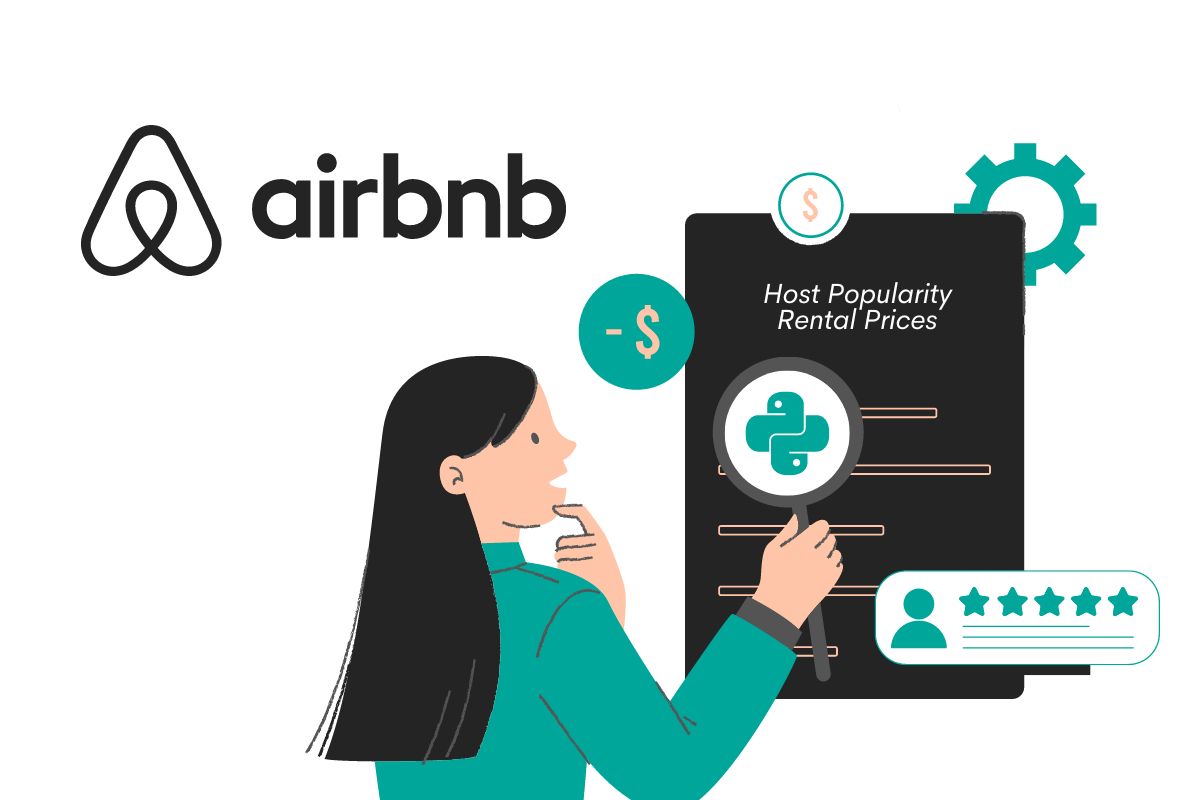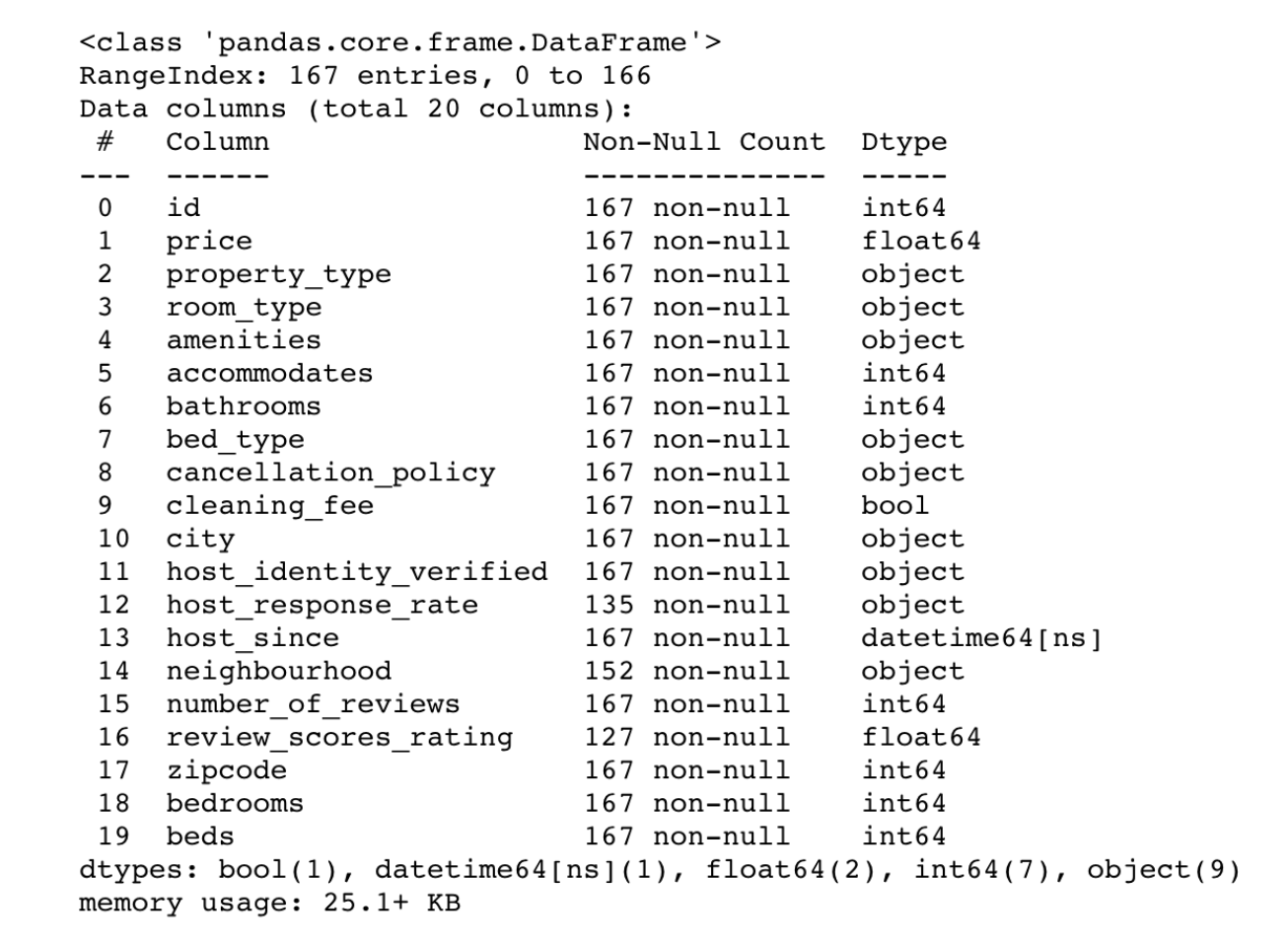Airbnb Python Interview Question: Host Popularity Rental Prices

Categories:
 Written by:
Written by:Nathan Rosidi
We’ll walk you through one of the Airbnb Python interview questions and show you how to do data aggregation and labeling in Python.
Airbnb is an abbreviation for Air Bed and Breakfast. You probably know that, and the chance is you also used it at least once.
It’s a platform connecting property owners who want to rent their places with guests searching for places to stay. The platform allows guests to rate hosts and vice versa, which is a relatively efficient way of rooting out terrible hosts and guests.
Of course, if the hosts and their place get better reviews, their business increases.
To confirm that, you can see here that Airbnb’s superhosts welcome more guests. There are four conditions for becoming a superhost: overall ratings (4.8+), stays(10+), cancelation rate(<1%), and response rate(90%).
This is one of the hard level python interview questions, in which we will develop a bit different host categorization. Let’s look at our question.
There’s also a Youtube video on our channel to better understand what we’ll talk about.
Interview Question: Find the minimum, average, maximum rental prices for each host’s popularity rating.
Last Updated: February 2018
You are given a table named airbnb_host_searches that contains listings shown to users during Airbnb property searches. Each record represents a property listing (not the user's search query). Determine the minimum, average, and maximum rental prices for each host popularity rating based on the property's number_of_reviews.
The host’s popularity rating is defined as below: • 0 reviews: "New" • 1 to 5 reviews: "Rising" • 6 to 15 reviews: "Trending Up" • 16 to 40 reviews: "Popular" • More than 40 reviews: "Hot"
Tip: The id column in the table refers to the listing ID.
Output host popularity rating and their minimum, average and maximum rental prices. Order the solution by the minimum price.
Table
In this question, Airbnb asks us to classify the host's popularity according to the number of reviews the host has. It also wants us to show the min, max, and average prices for each popularity category.
That means the output should contain 4 columns, which are:
- host_popularity
- minimum
- maximum
- average prices
Here are the conditions for each host popularity category:
0 reviews:
New1 to 5 reviews:
Rising6 to 15 reviews:
Trending Up16 to 40 reviews: Popular
more than 40 reviews: Hot
You can find all this and the question itself on the link here → https://platform.stratascratch.com/coding/9632-host-popularity-rental-prices.
Now, let’s start solving the question by exploring our data first.
1. Exploring the Dataset
To frame your problem, you should understand your data first. Here, Airbnb provides us with the airbnb_host_searches data frame.
Let’s see the columns and data types of these columns.
We have host data containing id, price, property type, and more.
Now, since we got the information about our columns, let’s look at the first rows of our data using the HEAD( ) function to collect more information.
airbnb_host_searches.head()Let’s look at our output.
Here you can see we have decimals in our price columns. That might be a problem when we calculate the min, max, and average.
Also, when we select the price and review to classify the popularity, the two different listings could have the same price and reviews. This might require a workaround when removing the duplicates.
Now, let’s continue data exploring to know our data better, which will help us to gain more information so that we can do analysis easier.
airbnb_host_searches.info()Here is our output.

We can see the length of columns, data types, and the number of columns with non-null counts.
Let’s continue writing out the approach.
2. Writing Out the Approach

After exploring the data, we will split our problem into codable stages. This will help us frame this problem easily and turn this approach into a code.
Step 1:Import the libraries
Here, we will import the Python libraries. Pandas allow us to manipulate the dataset. We will import NumPy, too, because we will work with arrays.
Step 2: Format to two decimals
Since we will do calculations like min, max and average, we have to format our data. So we will round floats to two decimal places.
Step 3: Rename the data frame
We will do a lot of operations in the following steps. We will rename the data frame to make the code syntax more readable and short.
Step 4: Drop the duplicates
The data that we will work with contains the searches by users. So that may have the host data duplicates. That’s why we will remove them and do calculations once for each host.
Step 5: Conditional statements with a lambda function
There are many ways to classify your host popularity category. The first thing that comes to your mind is to write an if-else block, which might take too much effort and be hard to read. We will use the lambda function to make your code neater and shorter.
Step 6: Calculate the min, max, and average by grouping the columns.
As a final step, we will calculate the min, max, and average for each host popularity category and assign them as a column to our data frame.
With these steps, the coding becomes easier. This approach can, of course, vary according to your solution. With time, you’ll get used to splitting the question into a codable approach according to your coding abilities.
The general advice is to try and make your code shorter and more readable.
3. Coding the Question
Now, let’s turn this approach into coding.
Step 1. Import the libraries
Import pandas and NumPy because we will work with arrays. We will also manipulate data and change the data format to the desired output.
import pandas as pd
import numpy as np
Step 2: Format to two decimals
Our columns contain the float values. The question tells us to find the min, max, and average prices for each host's popularity. That’s why we will format our data float values with two decimal places.
To do that, here is our code.
pd.options.display.float_format = "{:,.2f}".formatStep 3: Rename the data frame
Now our format is ready. Since we will do many manipulations to our data, we will build a small pipeline. To do that, we will use our DataFrame name multiple times. To shorten our syntax, we will rename our DataFrame as df. That’s how our code will look shorter and neater.
df = airbnb_host_searchesStep 4: Drop the duplicates
The data that we have contains searches by users.
What does that mean?
It means that we might have duplicates. To solve the interview question, we need to select the price and the number of reviews columns.
But what if the two listings have the same price and number of reviews? If we simply remove the duplicates, we might unintentionally remove some listings.
To prevent that, we will create a column that contains the host ID. That will help us not to remove valid data accidentally.
To see the difference between the two approaches, let’s drop our duplicates with and without creating this column and use the INFO( ) method to see the length of our result.
#Drop the duplicates by adding a new column “host_id”
df['host_id'] = df['price'].map(str)+df['room_type'].map(str)+ df['host_since'].map(str)+df['zipcode'].map(str)+df['number_of_reviews'].map(str)
df1 = df[['host_id','number_of_reviews','price']].drop_duplicates()
df1.info()
#Drop the duplicates without creating a new column.
df2 = df[['number_of_reviews', 'price']].drop_duplicates()
df2.info()
Here is our output.

Here you can see that not creating a host ID column will remove possible matching listings (same price and number of reviews). In total, we can accidentally remove 9 rows. (160 - 151 = 9)
Our solution will involve creating the host_id column. Here is the code.
df['host_id']= df['price'].map(str)+df['room_type'].map(str)+df['host_since'].map(str)+df['zipcode'].map(str)+ df['number_of_reviews'].map(str)
df1 = df[['host_id','number_of_reviews','price']].drop_duplicates()
Here is the output.
Step 5: Conditional statements with the lambda function
Now, we have different options for categorizing the host popularity. One common solution is to write an if-else block. Yet after writing the if-else block, your code will be longer and harder to read. Of course, there are many problems where using the if-else block is mandatory.
Yet, here we can use the lambda( ) function with the apply( ) function to broadcast our custom function to our DataFrame.
By using it with an index bracket, we will create a new column namem host_popularity.
The criteria for the host popularity categories is as follows. If the host has no reviews, it will be classified as “New”. Between 1 and 5 reviews is “Rising”, and between 6 to 15 “Trending Up”. If the host has between 16 and 40 reviews, they are “Popular”, and with more than 40 “Hot”.
So we will use the lambda function and if-else statements with that conditions.
Here is our code.
df1['host_popularity'] = df1['number_of_reviews'].apply(lambda x:'New' if x<1 else 'Rising' if x<=5 else 'Trending Up' if x<=15 else 'Popular' if x<=40 else 'Hot')Here is the output.
Step 6: Calculate the min, max, and average by grouping the columns.
Okay, we previously classified our hosts according to the number of reviews. Now, it is time to match these reviews with the min, max, and average prices.
To do that, first, we have to calculate these. Before doing that, let’s mention something useful for you if you are interested in solving coding problems. When you see “each” in the coding questions, generally, that means you should use the groupby( ) function.
Let’s see our question once again. It says: “Find the minimum, average, and maximum rental prices for each host’s popularity rating.”
Now, that means we will group by the host popularity first. Then we have to calculate the min, max, and average and assign them as the columns to our DataFrame. One easy way to do this is using the agg( )with our groupby( ) function. The agg( ) function helps us create new columns with names and functions inside it.
Here is the agg( ) function official library to see its usage and arguments.
The final step is to remove the indexes that the groupby( ) function adds.
Let’s see our final code.
result= df1.groupby('host_popularity').agg(min_price=('price',min),avg_price=('price',np.mean),max_price = ('price',max)).reset_index()Here is the output.
Conclusion
To solve this Airbnb python interview question, we formatted our DataFrame and removed the duplicates by creating a column first to prevent subsequent code debugging.
Then we classified the host's popularity according to reviews and calculated the average, minimum and maximum prices.
I hope you enjoyed this question. You can learn special functions like lambda, formatting options, and the different perspectives of duplicate removal.
Check out our post “Python coding interview questions” to see different coding challenges and enhance your coding ability, be familiar with different companies' interview questions and land a new job.
Share


